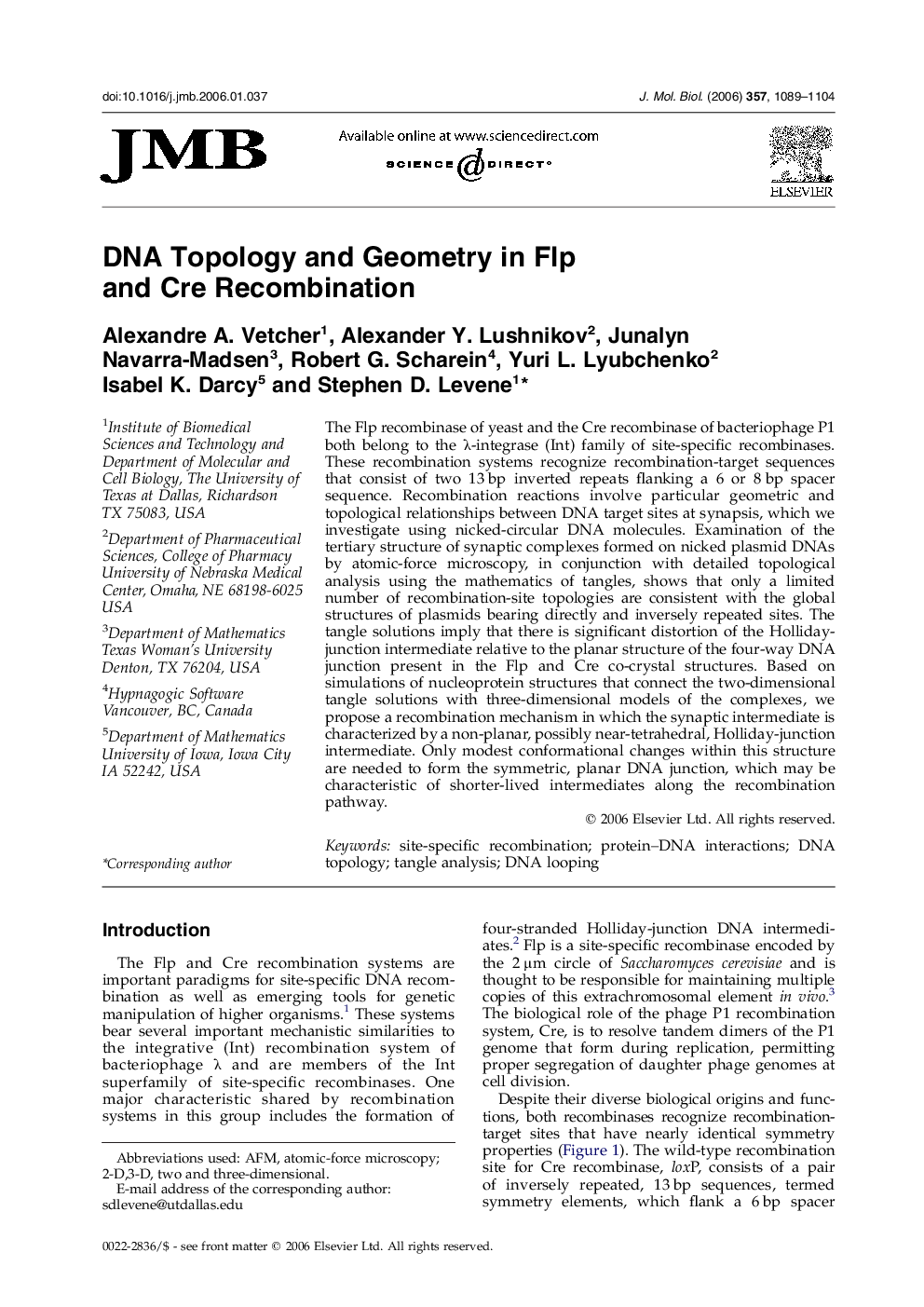| Article ID | Journal | Published Year | Pages | File Type |
|---|---|---|---|---|
| 2189937 | Journal of Molecular Biology | 2006 | 16 Pages |
The Flp recombinase of yeast and the Cre recombinase of bacteriophage P1 both belong to the λ-integrase (Int) family of site-specific recombinases. These recombination systems recognize recombination-target sequences that consist of two 13 bp inverted repeats flanking a 6 or 8 bp spacer sequence. Recombination reactions involve particular geometric and topological relationships between DNA target sites at synapsis, which we investigate using nicked-circular DNA molecules. Examination of the tertiary structure of synaptic complexes formed on nicked plasmid DNAs by atomic-force microscopy, in conjunction with detailed topological analysis using the mathematics of tangles, shows that only a limited number of recombination-site topologies are consistent with the global structures of plasmids bearing directly and inversely repeated sites. The tangle solutions imply that there is significant distortion of the Holliday-junction intermediate relative to the planar structure of the four-way DNA junction present in the Flp and Cre co-crystal structures. Based on simulations of nucleoprotein structures that connect the two-dimensional tangle solutions with three-dimensional models of the complexes, we propose a recombination mechanism in which the synaptic intermediate is characterized by a non-planar, possibly near-tetrahedral, Holliday-junction intermediate. Only modest conformational changes within this structure are needed to form the symmetric, planar DNA junction, which may be characteristic of shorter-lived intermediates along the recombination pathway.
